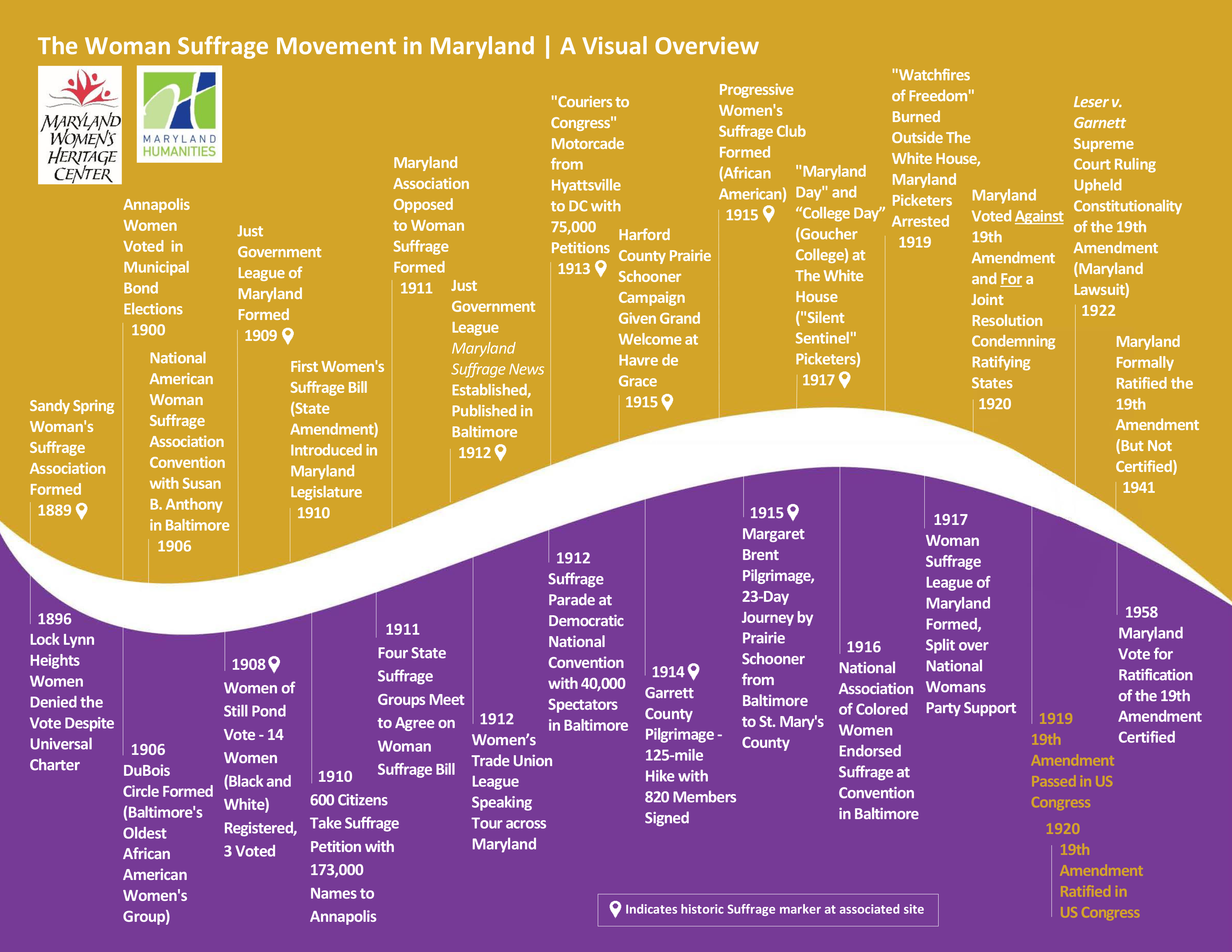
(January 12, 2025) At first glance, Delegate Heather A. Bagnall’s (D-Anne Arundel) bill HJ0002 that seeks to exonerate the Maryland women (and one man) who were accused or tried for witchcraft centuries ago might seem to pale against today’s pressing legislative issues.
That is, until you hear their stories. The Maryland Witches Exoneration Project has collected their names and what is known of their lives. The Maryland Women’s Heritage Center supports Delegate Bagnali’s bill and will preserve the stories of these innocent individuals.
Belief in witchcraft arrived in America with colonists from the Old World
Between 1654 – 1712, there are recorded instances of women (and one man) accused and tried for witchcraft, mostly in what is now southern Maryland. Women with special knowledge, such as midwifery or horticulture, were viewed with suspicion. So were poor, eccentric, mentally ill and even “outspoken” women.
When life’s unfortunate events occurred around them – bad weather, neighborly feuds, illness or unnatural deaths – blame sometimes landed squarely on these women who never quite fit into the norm. Their lives were upended with hysteric accusations of witchcraft fueled by ancient superstitions and beliefs carried across the ocean from the European Old World.
Their tales are heartbreaking. Yet, today, in a time when conspiracy and misogyny still persist, the stories also ring achingly familiar.
Mary Lee (circa 1654)
During her journey to southern Maryland aboard the Charity of London, probably as an indentured servant, Mary Lee came to be regarded by the ship’s sailors as a witch who caused an unnerving series of storms at sea.
With a ship’s master who refused to come to her defense, sailors seized and stripped her, looking for a “Witches mark.” Later, she was hanged. Though depositions were taken upon the ship’s arrival to Maryland, no one was ever tried for her death.
John Cowman (circa 1674)
John, an indentured servant, was accused of witchcraft for somehow harming another indentured servant. He was quickly found guilty and sentenced to death by gallows. He appealed to the Maryland Legislature for mercy, who eventually reversed the decision to hang.
Not a total reprieve, though, for he was sentenced to perform tasks “at the Pleasure of the Governor.” In a curious move, however, lawmakers did not tell him he was spared from death until he was marched to the gallows and the rope placed around his neck.
Rebecca Fowler (circa 1685)
Henry Cox purchased Rebecca Fowler (maiden name unknown) as an indentured servant to work in what is now Prince George’s County. When free, she married John, another former indentured servant. They prospered, working and saving wages. They also inherited a parcel of land from a former employer. With these resources, they purchased land and named it Fowler’s Delight.
Another indentured servant named Francis Sandsbury, possibly jealous of their success, accused Rebecca of witchcraft for an unclear reason. She was arrested, transported to St. Mary’s City and tried without benefit of legal representation. She was sentenced by the judge to hang on October 3, 1685. The execution was carried out six days later. She is the only person legally executed for witchcraft in Maryland. Fowler’s Delight is now part of the Mount Calvert Historical and Archeological Park
Moll Dyer (circa 1698)
Moll’s story lives on today in St. Mary’s County legend but is not as well documented in Maryland judicial records as some of the other accused.
We do know that her house was burned by local men who torched her house one night on account of suspected witchcraft. They believed she caused a deadly influenza outbreak. The flames drove her from the house and into nearby woods. Days later, she was found frozen to death, clinging to a rock.
That rock, with imprints that some say were left by her right hand, was allegedly found by a local newspaper reporter in 1972 and moved by the National Guard to the grounds of the local jail. It is now displayed at the St. Mary’s County Historical Society, located at Tudor Hall. Moll’s descendants remain living in the area.
Virtue Violl (circa 1712)
Virtue, who lived in Maryland’s eastern shore, is part of the Witches Exoneration Project since she stood trial for witchcraft, though acquitted. According to charges filed by the Attorney General of Maryland, William Bladen, she had caused “the tongue of Elinor Moore to be rendered speechless.” Advocates for the Maryland Witches Exoneration Project seek to clear her name of the accusations.
Elizabeth Bennett (1665)
Historical details are vague, but Elizabeth was charged with “Witchcraft, Burglary, Murder and Trespassing,” but later publicly cleared on the courthouse steps in St. Mary’s County.
Hannah Edwards (1686)
Hannah, a widow, was accused of using “witchcraft, enchantments, and charms” against Ruth Hutchinson who claimed that Hannah caused her great physical harm.
She was indicted on April 29, 1686 and the case went to trial, prosecuted by Thomas Buford, the same attorney general that took on Rebecca Fowler’s case. Two of the jurors who had also served on Fowler’s trial served in Hannah’s trial. However, while Rebecca was sentenced and executed for witchcraft, Hannah was found not guilty.
Her accuser lived another 23 years, apparently not seriously impacted by whatever crime sorcery that she believed Hannah had passed onto her.
Sources/Read more
Witch stories from around the watershed, by Rachel Felver, Chesapeake Bay Program, October 30, 2023, Accessed 1/12/25
Maryland Witches Exoneration Project, accessed 1/11/25
These Maryland women were accused of witchcraft. Their crime? Having power by Julie Scharper, Baltimore Banner, 10/15/24
Haunted Southern Maryland by David W. Thompson, accessed via Google Books, 1/11/25
Double Double Toil and Trouble, Maryland Center for History and Culture, accessed 1/11/25
Hundreds of years later, exoneration sought for Maryland ‘witches’, WTOP News, by Kate Ryan, 1/8/25, accessed 1/11/25
Witches Brew: True Tales of Folklore and Witchcraft in Colonial Maryland, Enoch Pratt Free Library, October 27, 2022
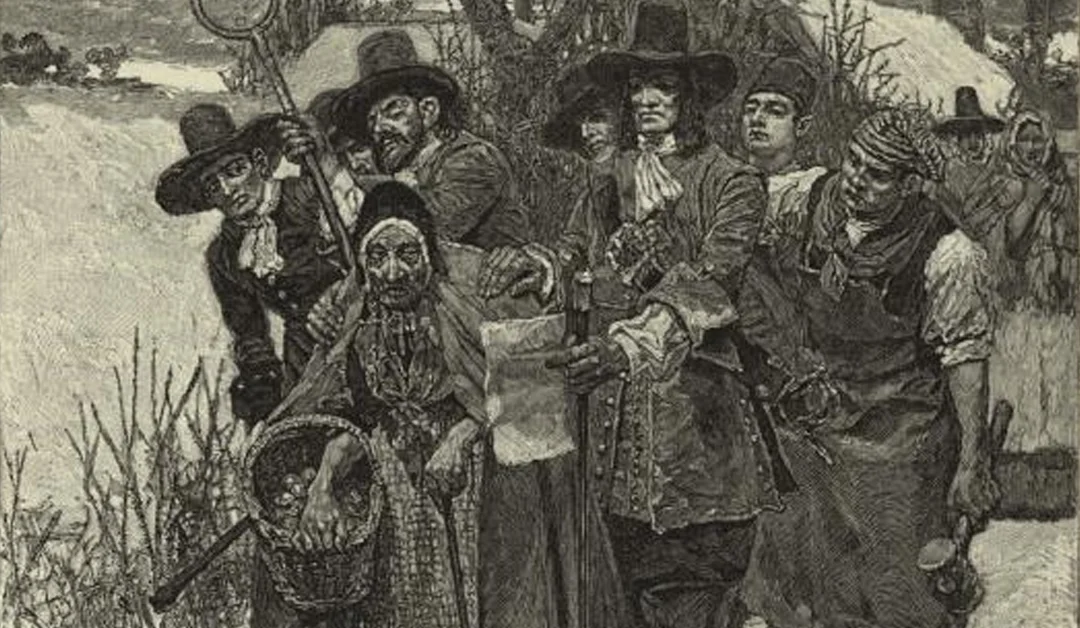
This illustration by Howard Pyle depicts the arrest of a suspected witch. Image Source: New York Public Library Digital Collections.
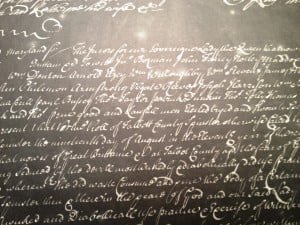
Text from Virtue Violl’s trial documents. She was “seduced by the devill wickedly & diabolically….” “Witchcraft, trials for, in Maryland. [manuscript] : Document, 1702/3 1712,” MS 2018, MdHS.
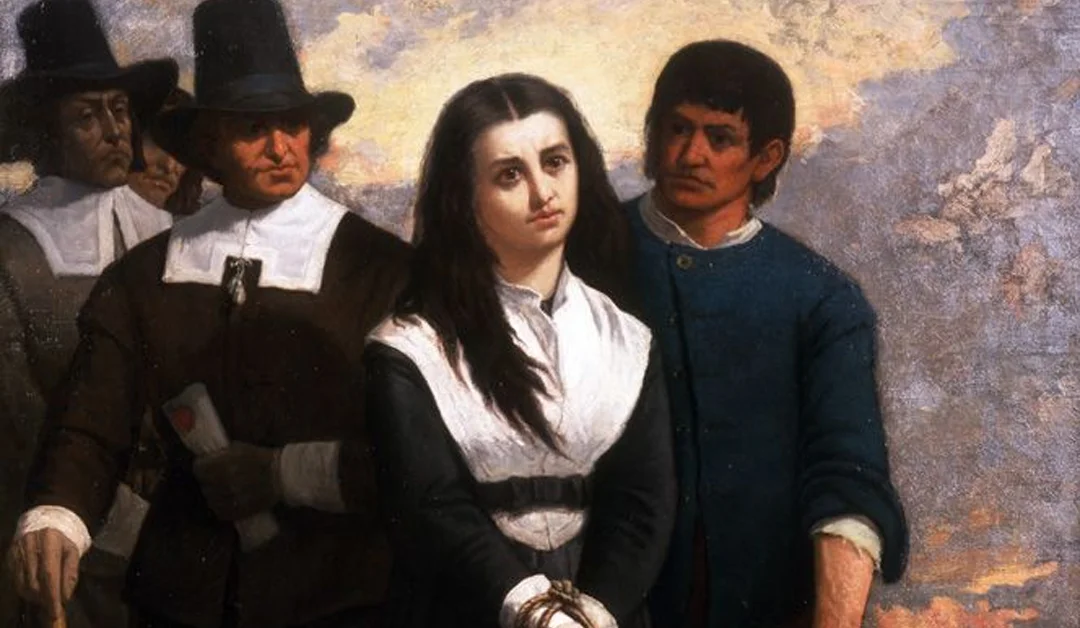
This 1869 painting by Thomas Satterwhite Noble depicts a woman being arrested during the Salem Witch Trials. Image Source: Wikipedia.
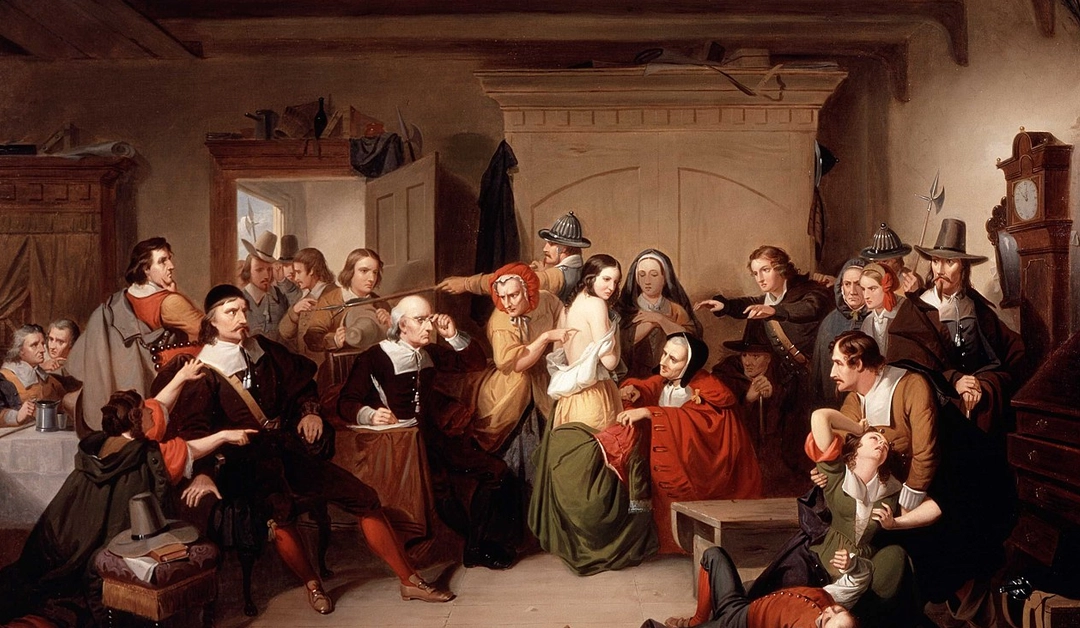
This painting by T. H. Matteson depicts the trial of a woman accused of witchcraft. It was inspired by the Salem Witch Trials. Image Source: Wikipedia.
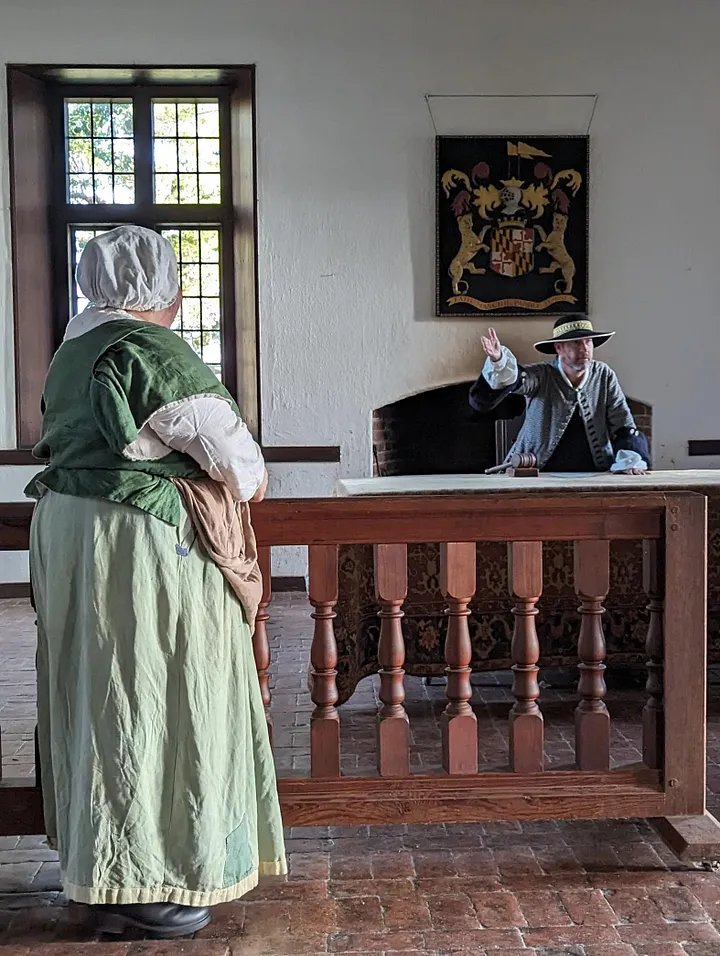

A reenactment of Rebecca Fowler’s trial. Credit: Medium, The Only Executed Witch in Maryland, Women of Essex, June 24, 2024
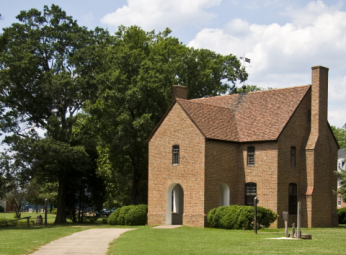
The modern-day reconstruction of the Maryland State House in St. Mary’s City, where the Provincial Court met and where Rebecca Fowler would have been tried. (Image source: Wikimedia Commons)
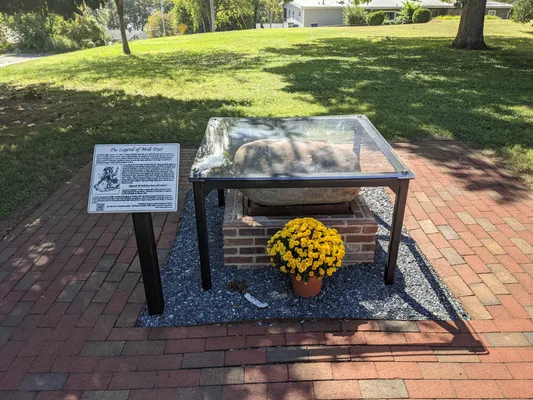
St. Mary’s County Historical Society relocated the large stone, thought to be the one to which Moll Dyer clung, to the grounds of Tudor Hall, where the Historical Society has its headquarters. blimpcaptain / Atlas
